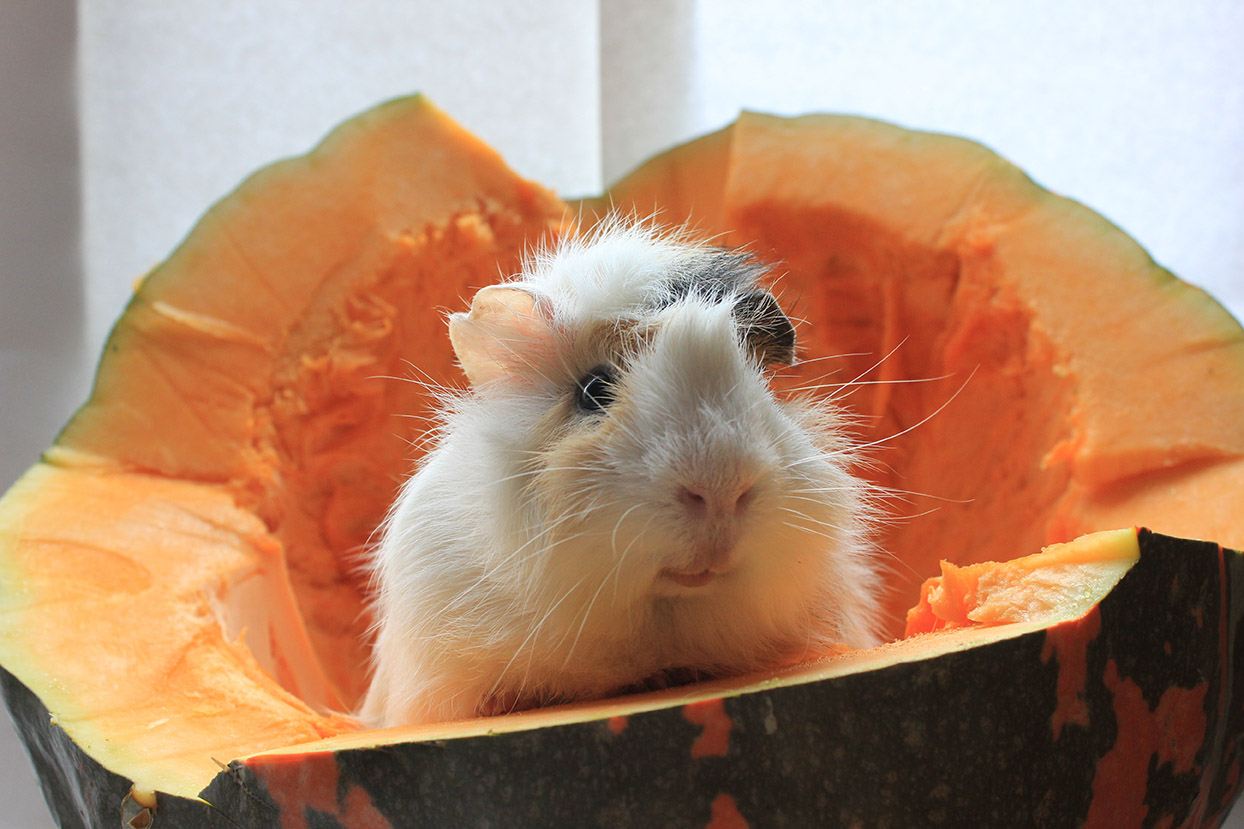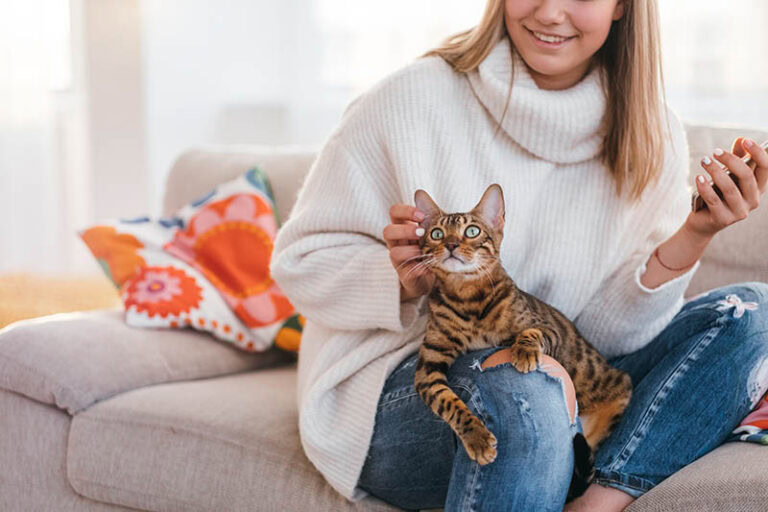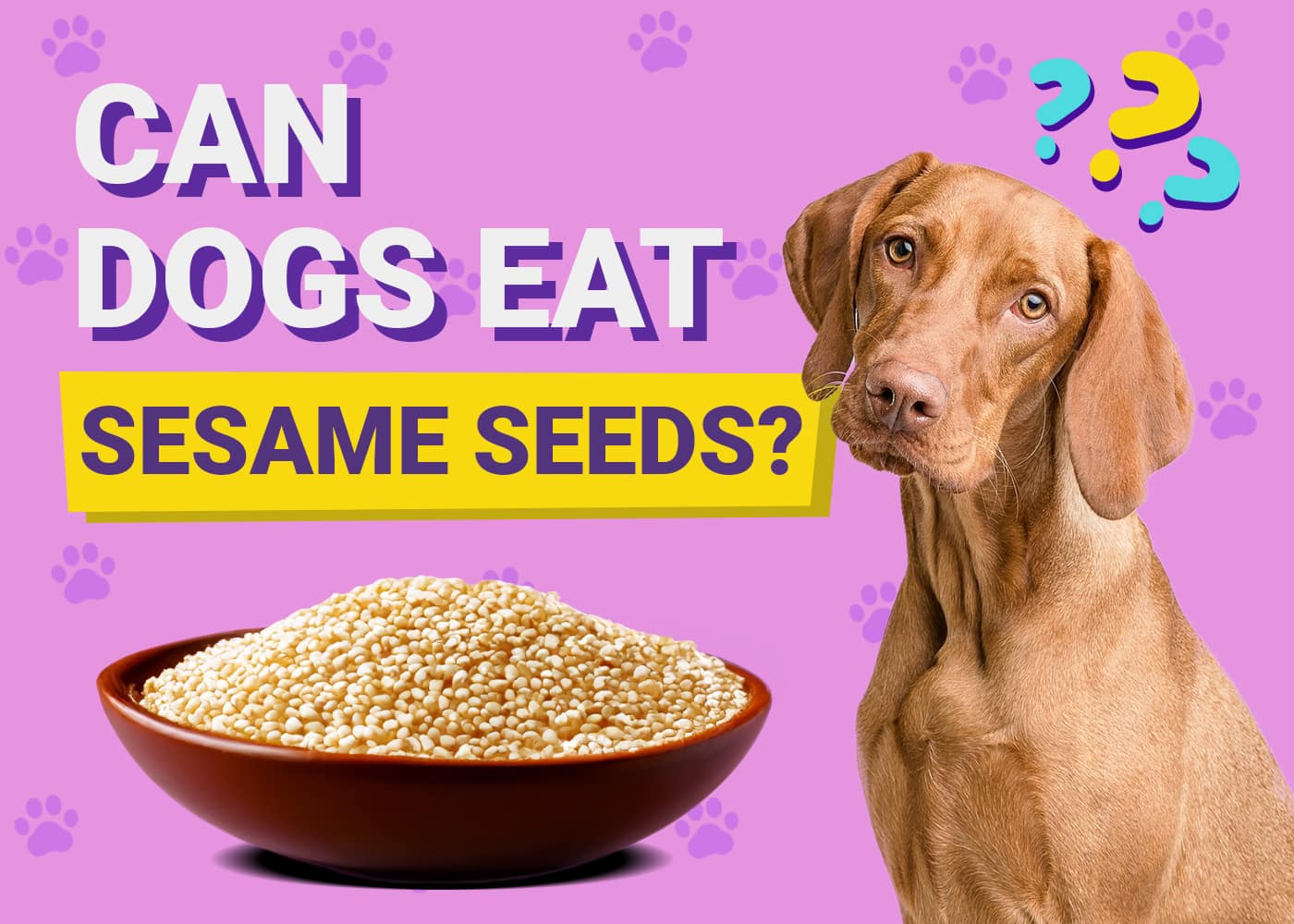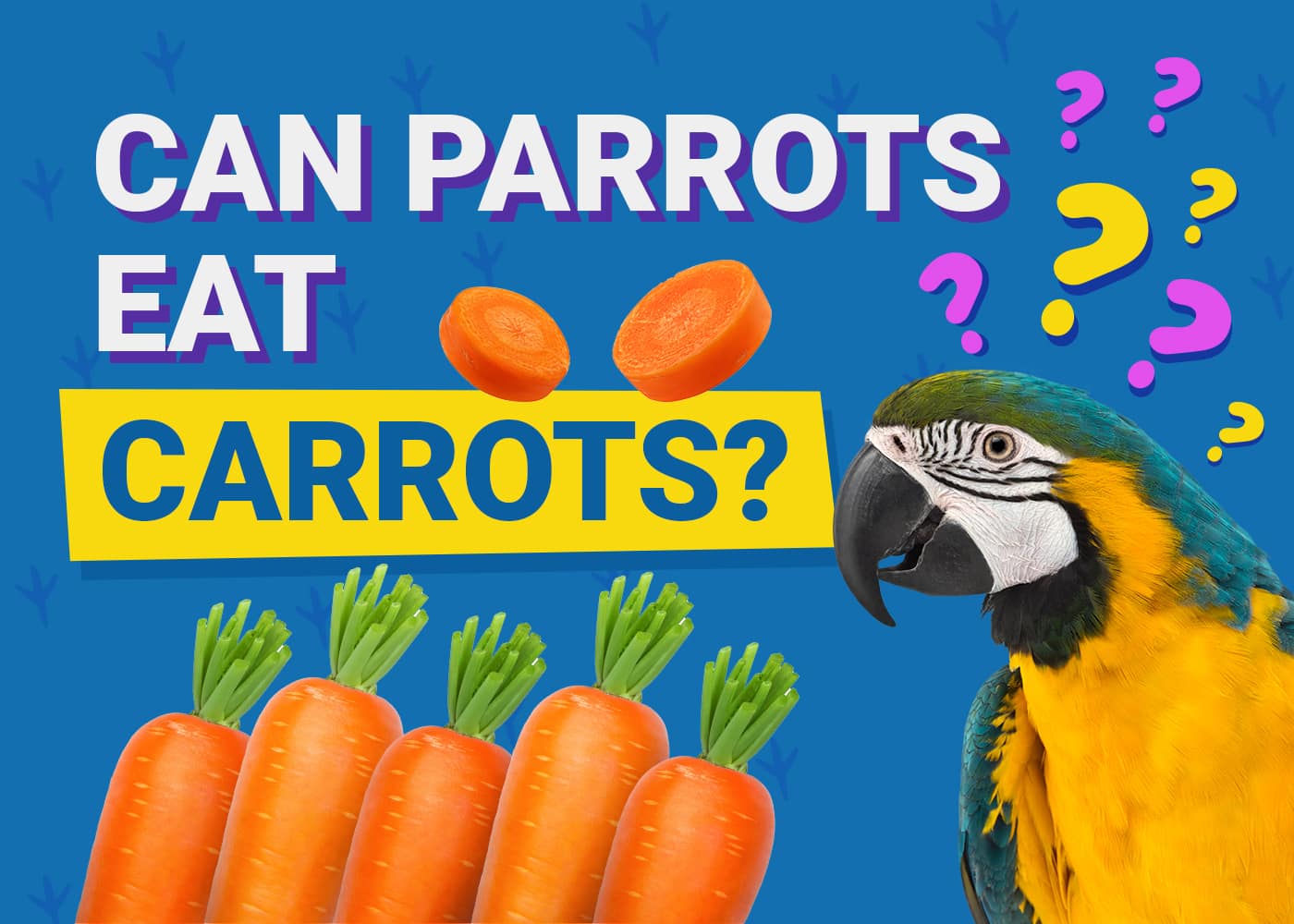VET APPROVED

The information is current and up-to-date in accordance with the latest veterinarian research.
Learn more »Click to Skip Ahead
Fat, lumpy, and divine in pie, pumpkins are a delicious and nutritious seasonal treat. People love decorating them, and the iconic, bright orange pumpkin has become synonymous with fall in the United States. But can you share your favorite autumn gourd with your resident guinea pigs? Yes, guinea pigs can eat pumpkin. It is non-toxic, edible, and totally safe in moderation.
In this article, we will give you an in-depth look at some nutrition facts about pumpkins, the health benefits and concerns for guinea pigs, and give you some tips for feeding these funny looking gourds to your piggers.

Pumpkin Nutrition and Fun Facts
Pumpkins are a type of gourd. Their Latin name is Cucurbita, and the plant is an herbaceous vine that flowers and grows pumpkins from the bud. Oddly, pumpkins can actually be termed fruits because of this and their seeds!
They are interchangeably called gourds, squash, and pumpkin depending on the region and type and shape.
Based on 100 g of raw pumpkin, these nutrients from the USDA are of particular note for guinea pigs:
- Water, 9.6 g
- Protein 1 g
- Sugars, 2.7 g
- Fiber, 0.5 g
- Potassium, 340 mg
- Beta carotene 3100 µg
- Vitamin C, 9 mg
Health Benefits of Pumpkin for Guinea Pigs
Pumpkin is an excellent treat food for your guinea pig’s diverse and well-balanced diet! In moderation, this festive gourd can confer a host of health benefits.
Beta Carotene and Vitamin A
Pumpkins are incredibly high in beta carotene, which is the precursor to vitamin A. Each 100 g of raw pumpkin is packed with 3100 µg of beta carotene.
Beta carotene is particularly helpful for preventing cataracts and promoting eye health, supporting the mucus membranes of the body, and keeping skin hydrated. It is also the nutrient that gives pumpkins their bright orange coloration.

Vitamin C
While pumpkin is not a significant source of vitamin C, it can be included as part of a more diverse diet to make sure your guinea pig gets their full daily recommended value.
Vitamin C is so important to guinea pigs because their bodies cannot produce it themselves. The only mammals in the world that are unable to synthesize vitamin C are humans, other primates, and guinea pigs!
This essential nutrient can boost your furry friend’s immune system, support collagen levels and wound healing, and is a powerful antioxidant.
A lack of vitamin C in your guinea pig’s diet can lead to all kinds of things like poor skin health, paralysis, and diseases like scurvy. We highly recommend checking in with your vet at every visit to make sure your guinea pig is getting enough vitamin C in their diet.
Fiber
Another benefit of pumpkin is its moderate fiber content. While it is not a replacement for the essential timothy hay-based, high-fiber diet guinea pigs require; small amounts of raw pumpkin can complement their gut function. It may help regulate mild digestive upsets such as soft stools or mild constipation, thanks to its water and fiber balance.
Offered in moderation, pumpkin can be a safe and nutritious treat that supports a healthy gut as part of a well-rounded, hay-based diet.
Potassium
The final nutrient in pumpkin that we’ll sing the praises of is potassium. This essential mineral allows a guinea pig’s body to do all kinds of great things including regulating fluids, nerve signals, and muscle contractions.
Potassium also protects bone health, reduces blood pressure, and prevents bladder stones. Guinea pigs are particularly prone to bladder stones, which is the crystallization of calcium that causes excruciating pain.
But by avoiding excess calcium and adding potassium-rich foods like pumpkin to their diet, you and your piggies can kiss nasty bladder stones goodbye!

Can Pumpkin Be Bad for Guinea Pigs?
Just as there are plenty of health benefits, there are also a few key reasons to moderate the amount of pumpkin you let your guinea pig eat.
Seeds
The seeds of all the varieties of pumpkins are totally edible and non-toxic. In theory, they should be safe, but when you consider the size of most seeds in comparison to your little friend, it is a totally different story.
Due to their size, pumpkin seeds pose the risk of getting caught in a guinea pig’s teeth (painful) or throat (extremely dangerous). Seeds also have incredibly high fat content, which is not entirely safe in such large volumes. A guinea pig eating a seed or two would be akin to you eating an entire jar of nut butter!
All in all, it’s just safer to remove the seeds of any pumpkin before letting your guinea pig go to town.
High Water Content
Though high in fiber, pumpkin flesh also contains lots of water. Proving that literally anything in excess really can be bad, veggies high in water content can sometimes give guinea pigs diarrhea.
To lessen the chances of digestive upset, always introduce new veggies and fruits to your piggy gradually and one at a time. That way if you notice their stool becoming watery or loose, you can simply reduce the new food and see if it helps.
High Sugar
You should also be aware that the flesh of pumpkins is relatively high in sugar. Much like in humans, a guinea pig that gets too much sugar in their diet can suffer from tooth decay issues, constipation, and obesity.
Pumpkins are not as sugary as some veggies and fruits, but with so many health concerns tied to sugar consumption, it is best to be cautious.

How to Feed Pumpkin to Your Guinea Pigs
Always feed fruits and veggies to your piggy totally raw!
Fall means that we get inundated with all kinds of delicious pumpkin-flavored things – from pies to candies, to coffee – but your guinea pig’s digestive system cannot handle flavorings, seasonings, or cooked foods at all. This means you’ll have to keep all the pumpkin spice lattes to yourself!
Rind
While the flesh of the pumpkin is safe in small amounts, the outer rind is not recommended for guinea pigs. It is tough, difficult to digest, and may harbor pesticide residues or waxes, even after washing. Stick to offering only the soft, raw inner flesh.
Leaves, Vines, and Stems
You may be delighted to know that guinea pigs can even eat the leaves of the pumpkin plant – especially if you grow your pumpkins yourself! Nothing goes to waste with these hungry little herbivores.
Please note, however, that the vines and leaves of pumpkins can cause issues if eaten regularly or in excess. The green plant parts of a pumpkin are super high in calcium, which can cause excruciating bladder stones in your piggy.
Feeds leaves and vines of the pumpkin plant to your guinea pig infrequently and in extreme moderation – one leaf is more than enough!
How Much Pumpkin Should I Feed My Guinea Pigs?
Introduce any new food to your guinea pig slowly and carefully so that you can remove it if any adverse reactions show up.
We recommend starting out with just a few small cubes of pumpkin. If it does alright by them you can treat them with this bright orange squash semi-regularly, with a few days in between at least to prevent bloating and gas.
As part of a more diverse diet, you can mix a little pumpkin into their veggies no more than a few times a week.
Types of Pumpkin to Feed Your Guinea Pigs
Even though the name “pumpkin” will often recall the one iconic orange fruit, it is a name that refers to a number of very different looking squashes!
All squash that falls under the gourd species Cucurbita is safe for your guinea pig to eat. Here’s a list of some common squash you can try letting your piggies eat:
- Pumpkin (Cucurbita pepo), the Halloween famous squash!
- Butternut Squash (Cucurbuta moschata), a slightly sweeter and more delicately colored cousin
- Acorn Squash (Cucurbita pepo var. turbinate), a green and bright yellow gourd
- Scallop or Pattypan Squash (Cucurbita pepo var. clypeata), green and shaped like a flying saucer

Final Thoughts on Feeding Pumpkin to Your Guinea Pig
Edible pumpkin varieties that are safe for human consumption are also safe for your guinea pig to eat.
However, as ancient Greek philosophers and moms have been saying for ages: moderation is the key to health! It is inadvisable to give your guinea pig carte blanche on pumpkins. But in small amounts, these nutritious gourds can support a healthy diet and a happy piggy.
Happy munching!










